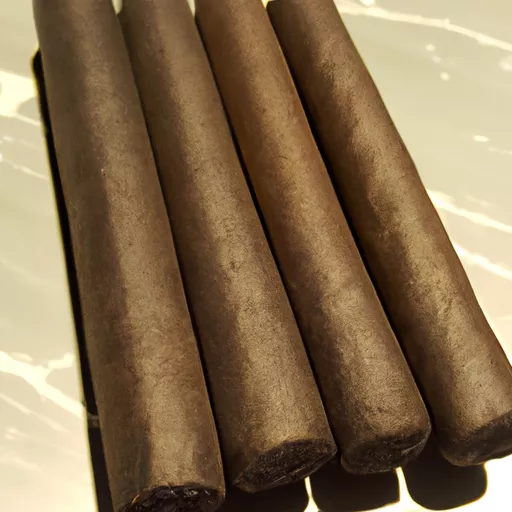little black cigars

As someone who enjoys the occasional cigar, I have always been intrigued by the concept of little cigars. These small, slim versions of traditional cigars have gained popularity in recent years, offering a unique smoking experience for cigar enthusiasts. In this article, I will dive into the world of little cigars and explore their history, flavors, and appeal.
Firstly, let’s address the obvious question – what exactly are little cigars? Simply put, they are cigars that are smaller in size and usually have a filtered tip for a smoother smoke. They come in various brands, flavors, and packaging, just like regular cigars. Little cigars are also known as cigarillos, which is derived from the Spanish word “cigarro” meaning cigar.
The history of little cigars can be traced back to the 19th century when they were initially called “little cigars” or “cheroots.” They were primarily used as a cheaper alternative to regular cigars and were popular among the working-class. However, their popularity declined in the early 20th century due to the rise of cigarette smoking. It wasn’t until the 1990s that little cigars made a comeback, and their sales have been steadily increasing ever since.
One of the main differences between cigars and little cigars is the size. Little cigars are typically between 3-4 inches in length and have a ring gauge of 20-34, whereas regular cigars are longer and larger with a ring gauge of 40 and above. This size difference also translates to a difference in smoking time, with little cigars providing a shorter smoke compared to traditional cigars.
Little cigars also have a distinct flavor profile. They come in various blends, such as sweet, mild, and full-bodied, catering to different preferences. Some popular flavor options include vanilla, cherry, and chocolate, which adds a pleasant sweetness to the smoke. However, the flavoring is not as strong as in cigarettes, making little cigars a favorite among cigar enthusiasts who prefer a milder smoke.
Another factor that sets little cigars apart is their affordable price point. They are significantly cheaper than traditional cigars, making them accessible to a wider market of smokers. Their smaller size also means they require less tobacco, thus reducing the cost of production. This affordability has contributed to the rising popularity of little cigars, with many smokers opting for them as a cost-effective alternative to regular cigars.
One of the main appeals of little cigars is their convenience. Their compact size makes them perfect for on-the-go smoking, and their filtered tips make for a cleaner smoking experience. They can easily fit into a pocket or purse, making them a popular choice for outdoor events or travel. Additionally, some little cigars come in individual packaging, making them easier to carry around without the need for a humidor or cigar case.
However, it is crucial to note that little cigars are still tobacco products and should be consumed responsibly. They may be smaller in size, but they still contain nicotine and other harmful chemicals that can have adverse health effects. It is essential to read the warning labels on the packaging and consume them in moderation to reduce the risks associated with smoking.
In conclusion, little cigars offer a unique twist to the traditional cigar smoking experience. Their smaller size, affordable price point, and variety of flavors have contributed to their increasing popularity among smokers. Whether you are a cigar enthusiast or looking to try something new, little cigars are worth exploring. But remember to consume them responsibly and enjoy in moderation.